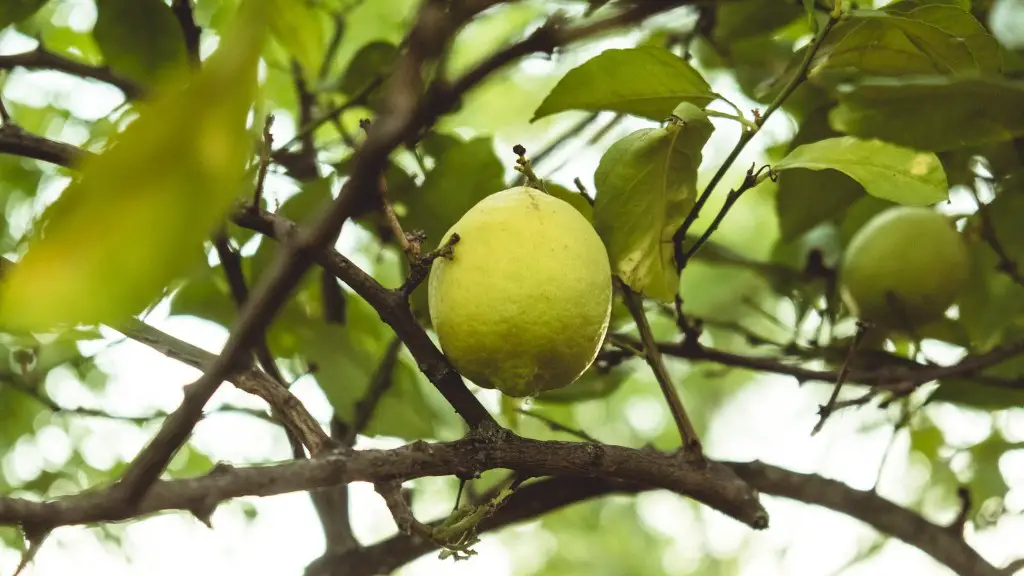Plants are fascinating organisms that can survive and thrive under various conditions. That being said, it’s always interesting to observe plants closely and analyze any abnormalities that may arise. One such phenomenon that might inflict lemon trees is that the leaves may be sticky. There are various possible explanations for why this is, and let’s discuss the main ones.
The first suspect is pests. Many insects, including aphids and mealybugs, secrete a sugary substance known as honeydew while they feed on lemon trees. Besides being sticky, honeydew provides an ideal environment for sooty mold, a type of fungus, to grow in. Symptoms of pest infestation in a lemon tree often include wilting and yellowing of leaves, stunted growth, and general weakening of the plant, which should be carefully taken into consideration.
Secondly, the leaves may be sticky if the tree has been over watered. Too much water causes the lemon tree’s root system to weaken, which leads to the roots being less able to absorb moisture from the soil. Consequently, this leads to high levels of humidity in the air, giving rise to moist surfaces on the leaves and the sticky substance.
Another quite common factor is the tree itself. Lemon trees rely on the stomata – microscopic openings found in the underside of the leaves – to absorb moisture and give off carbon dioxide every day. When these stomata become blocked due to waxy or sticky leaves, it can lead to an abnormally high rate of evaporation, which in turn causes the leaves to become sticky.
Lastly, environmental conditions may come into play. If the lemon tree in question is kept in direct contact with salty water or another similar substance, such as fertilizer, it may lead to the buildup of residue on the leaves and make them sticky. Also, low light, high temperatures, and low humidity can cause moisture on the leaves to evaporate quicker, leading to the leaves sticking together.
Pest Infestation
To deal with a pest infestation, it is suggested to use organic pesticides that are specifically suited for the type of pest and will not harm the tree. Furthermore, treatment for pest infestation should involve an inspection for egg masses or hidden colonies, as some pests remain hidden until identified. In cases of severe infestation, preventive measures such as regular pruning of affected branches and the removal of dead leaves are recommended.
Careful monitoring of pest populations over the course of several years is also important in order to identify any trends in pest activity or other conditions that could create a problem area. If left unsolved, pest infestations can reduce the tree’s overall productivity and even lead to overall plant health decline.
It is important to act quickly when dealing with a pest infestation in a lemon tree, as these insects can spread quickly and can become more difficult to control if left for too long. If natural methods of pest control are not enough, there are a number of insecticides that can be used to eradicate the problem.
Regular applications of pesticide should be employed in order to keep the lemon tree free from pests and increase overall tree health. As a precaution, it is recommended to use organic pesticides, as these are generally more environmentally friendly and less harmful to the tree.
In closing, it is important to remember that prevention is better than cure when it comes to pest infestation and other environmental conditions that affect the health of a lemon tree. Regular pruning, monitoring, and treatment are all integral steps to ensure the well-being of a lemon tree.
Over Watering
One of the main causes of stickiness on lemon tree leaves can be attributed to over-watering. Not only can over-watering lead to the leaves of the tree becoming covered in a sticky substance, but it can also cause the lemon tree’s root system to weaken, leaving it vulnerable to pests and diseases. To prevent over-watering, it is important to ensure that the lemon tree is placed in soil with high drainage properties and to water the tree regularly but in moderation.
It is also essential to check the soil for moisture levels regularly and make sure that it does not get too wet. If the soil dries out quickly, it is an indication that it is too dry, and it must be watered. Additionally, in warmer climates, the lemon tree must be shielded from the sun and watered at least two to three times a week in order to avoid excessive water evaporation and dehydration.
Furthermore, it is important to use mulch around the tree base and to ensure that the soil pH is appropriate for the lemon tree. Compost, peat moss, cypress mulch, and wood chips are good mulches that can be used around the tree base, as they will help to conserve moisture and provide vital nutrients to the tree.
Finally, it is important to reduce the amount of water applied to the tree during the hottest periods of summer when temperatures are too high as this can cause water stress to the tree. In order to ensure proper water management in the tree and avoid over-watering, it is recommended to take readings of the soil moisture levels both with a stick one more commonly used and more sophisticated tools, such as a moisture meter.
Stomata Blockage
When it comes to the stomata blockage, the leaves of the tree can become clogged with wax or other naturally occurring residues due to environmental factors such as high temperatures, low light, and low humidity. In order to reduce the possibility of this occurring, it is important to take steps to ensure the environment is conducive to proper air circulation.
When planting a lemon tree, it is essential to choose a location with well-draining soil, as this will reduce the chances of the tree experiencing waterlogging. Furthermore, it is important to provide adequate protection from direct sunlight and wind and to prune the tree regularly as this will promote air circulation and reduce the chances of the leaves becoming clogged.
It is also important to ensure that the tree receives the appropriate amount of water, as too little or too much will both cause the stomata on the leaves of the lemon tree to become blocked. Additionally, fertilization should be done regularly and never directly onto the tree’s leaves, as this can create a build-up of waxy residue on the surface of the leaves, in turn blocking the stomata.
Finally, it is important to pay attention to signs of pests or other infestation in the lemon tree, as these can cause the leaves to become sticky. Regular inspection of the tree is essential in order to identify any signs of infestation, and if any signs are spotted, it is important to treat the tree immediately in order to prevent the spread of pests.
Environmental Conditions
Adverse environmental conditions, such as high temperatures, low light and low humidity, can cause the leaves of a lemon tree to become dry and sticky. In order to prevent this, it is important to maintain the temperature and humidity level in the surrounding environment. Warm and dry air can promote dryness on the leaves, and high temperatures can cause the leaves to become hot and sticky.
It is also important to choose the right soil for a lemon tree and to ensure it is well-draining, as soil with poor drainage can hinder the tree’s ability to manage moisture levels. Additionally, applying mulch around the tree base can help to protect the soil from drying out too quickly and promote adequate water retention.
Finally, it is important to plant the right type of lemon tree for the local area. Different types of lemon trees have varying requirements, and it is important to select one that can cope with the desired environmental conditions. Additionally, pruning the tree regularly and protecting it from strong winds and direct sunlight can ensure that the tree remains in good condition.
Conclusion
It is important to be aware of why the leaves on a lemon tree may become sticky in order to be able to take steps to prevent or treat the issue. Common causes include pest infestation, over-watering, stomata blockage and adverse environmental conditions. To reduce the chances of these conditions occurring, it is essential to take steps such as monitoring the tree for signs of pests, providing the tree with the required amount of water, and planting the tree in the right soil.




